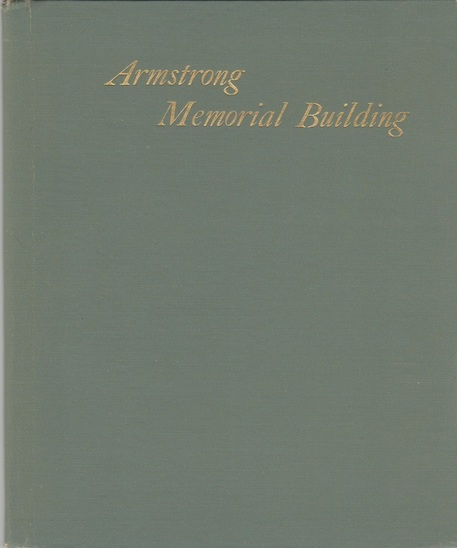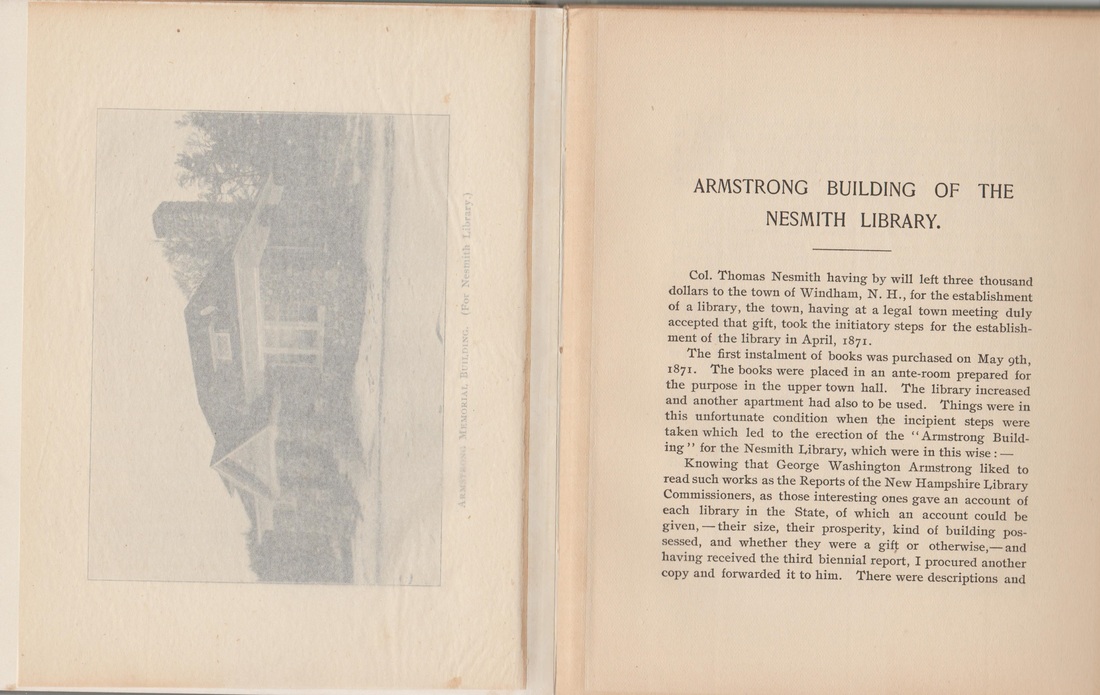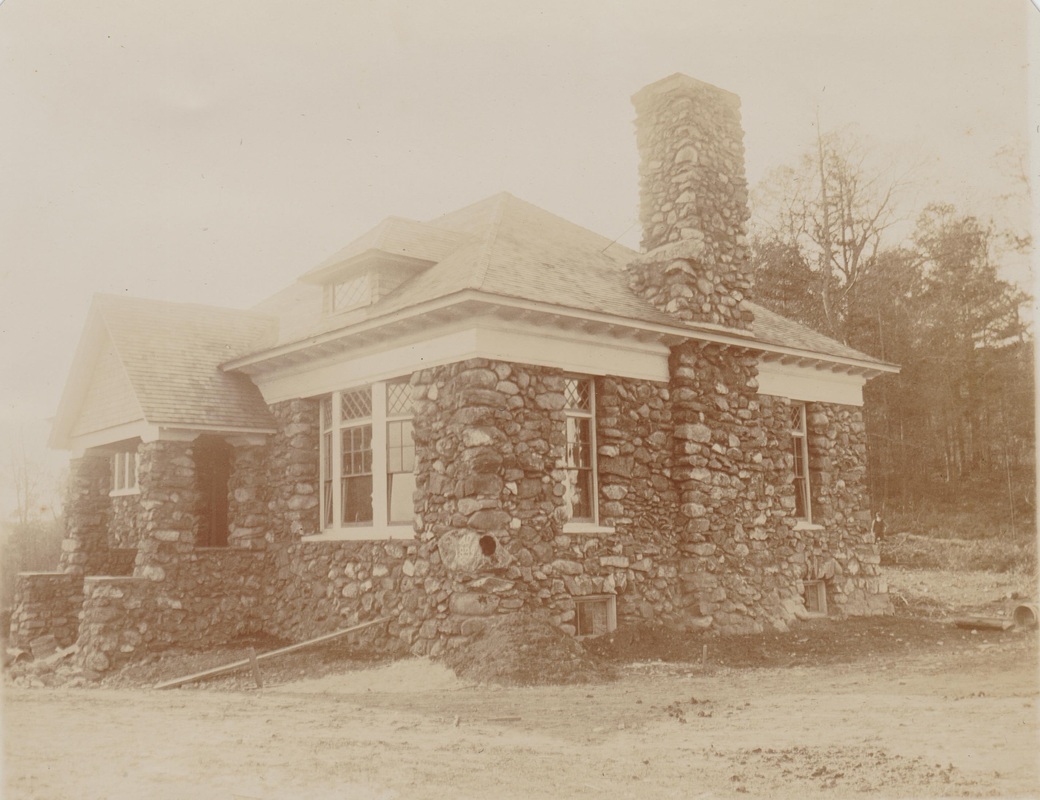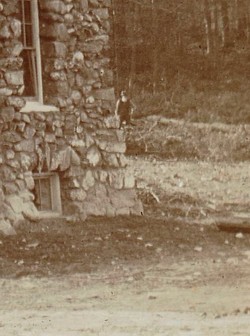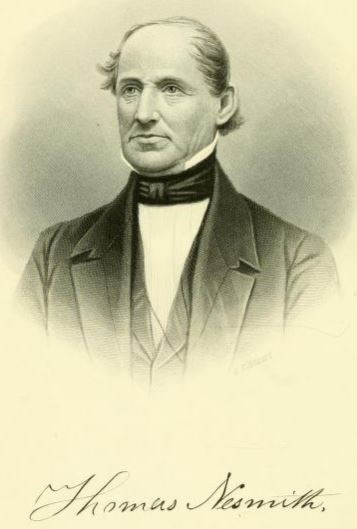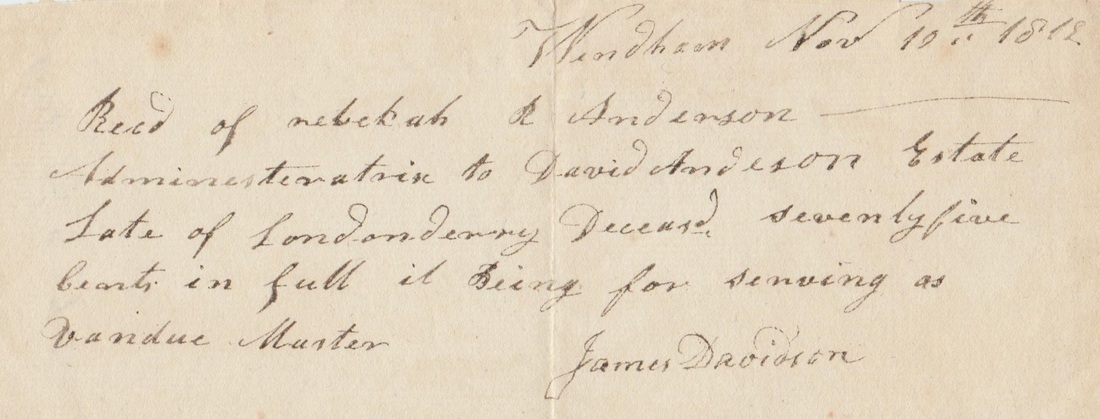|
The official dedication of the Armstrong Memorial Building took place on January 4, 1899, at two o'clock in the afternoon. Reverend James P. Harper opened the ceremony with a prayer, which was followed by an address given by Leonard A. Morrison as the president of the day's events. Morrison proclaimed that the act of presenting the building to the town had the "immutable stamp of an earthly immortality upon it." He continued on saying "We, with all our hands have wrought, and all our hearts have loved, must pass away; but this building and this library, we hope, will not pass away. Other hands will tend it; other feet will press the gravelly road to reach this favored spot..." The next address scheduled for the day was given by Hon. Albert E. Pillsbury of Boston, MA, who had previously served as the attorney general of Massachusetts; Pillsbury had an ancestral connection to Windham, being a descendant of the Dinsmoor family. His speech, which was relatively long in comparison with Morrison's, was followed by an address by William H. Anderson, who spent the early part of his life on the Anderson family homestead near Beaver Brook. Anderson opened his speech by saying "It is hardly fair to introduce me as one who will 'make an address,' when, in your letter inviting me to be present, you said that I could speak, on the express condition that I would talk for only five minutes; and I had fully determined to conform to that condition to the letter..." The length of the speech suggests that he was true to his word in the brevity of his address. Reverend Augustus Berry of Pelham was the next speaker to address the crowd at the town center, speaking of the importance of the newly constructed library. George Washington Armstrong spoke very briefly when Reverend Berry concluded his speech, after which Reverend Harper, a trustee of the Nesmith Library, addressed the audience for the second time that day. William Calvin Harris then presented the resolutions, which were unanimously adopted on that day; a finely engraved copy of the resolutions were then presented to Armstrong. The audience then sang "America", after which the day's exercises were concluded with a blessing by Reverend Berry. Everyone who had gathered at the town center that day then had a chance to enter the building for the first time; many of George Armstrong's friends and associates were present. Those who came to Windham in the company of Armstrong, left for Boston on the 5:15 train that departed from Canobie Lake. Those interested in reading the original book detailing the history of the building, along with several illustrations, may do so by using the link below:
0 Comments
In April of 1871, the town of Windham began to lay the foundation for the establishment of a library with the funds bequeathed to the town by Colonel Nesmith. On May 9th of that year, the first books were purchased and placed in a room on the upper floor of the town hall; a room on that floor had been specially prepared for the purpose. As the library grew in size, it became necessary to move a part of the ever expanding collection into another room. By the early 1880s, Windham’s citizens were borrowing approximately 4,500 hundred books annually from the library; at that time there were just under 2,500 books in the collection. The Nesmith Library remained confined to the insufficient space in the town hall for for over twenty years. However, in 1897 George Washington Armstrong, a descendant of one of the founding families of Windham, was alerted to the need of a library by Leonard Morrison. Armstrong was an avid reader of the “Reports of the New Hampshire Library Commissioners”, which gave details about all of the libraries in the state; such details as the building they were housed in, their size, and whether or not they were a gift from a generous benefactor. Morrison knew of Armstrong’s interest in libraries and forwarded him a copy with the suggestion that he could provide funding for a building to be constructed to house the collection of the Nesmith Library. However, Morrison did not immediately receive an answer from Armstrong, it would be nearly a year before he made a visit to Morrison’s home in Windham. On that May afternoon, Armstrong informed Morrison that he had given it thought, and decided that he would pay for the erection of a library. The townspeople of Windham first heard of this plan on June 12, 1898. It was that same month that a town meeting was held vote to construct the building; Windham’s citizens voted in favor of accepting the gift of a library, as well as the condition that the site be selected by the selectmen and the donor. The meeting was then adjourned for ten minutes so that those present could have a chance to survey the chosen the site. On July 16 it was officially decided to make the town center the site of the Armstrong Memorial Building. Prior to the groundbreaking on July 24, William Weare Dinsmoor was chosen as the architect for the project. The fieldstone construction was the decision of Armstrong, and it was uncommon in rural areas at the time. Morrison remarked that the “..material was new to us as a building material, which is used by the rich and opulent in all the cities, in their abodes, and in their rustic homes.” The stonelaying was done by Loren Emerson Bailey, a native of Windham but a resident of Salem at the time. George William Thom, the building’s carpenter, also had a connection to Windham, being a descendant one of the earliest settlers of Windham, William Thom. Masonry work for the project was completed by Moses Colby Page, a Windham resident. The stones selected for the building were taken from an old wall from the pasture of William Harris and James Cochran, which had fallen into disrepair. More specifically, the stones selected were from the northern section of the wall because they were covered in moss; this would give the stone a unique tone and appearance. The interior of the building was completed in naturally finished cypress, with polished Georgia pine floors. The building was outfitted with enough shelving to house 10,000 books to meet the future needs of a library, which consisted of only a few thousand volumes at the time the construction was completed. The Armstrong Memorial Building was completed in January of 1899, and the dedication ceremony was held on January 4.
The story of the Armstrong Memorial Building begins with Colonel Thomas Nesmith bequeathing the town the sum of three thousand dollars after his death in 1870. Nesmith had been born to one of Windham’s oldest families on September 7, 1788. Compared to many of the school-aged children in Windham, Nesmith was well educated, having attended Windham’s schoolhouses and completing his formal education at Pinkerton Academy. His father ran a small one-room store out of their home. Upon his father’s death at the age of 44, Thomas, with his brothers, helped their widowed mother keep the store open. In 1810 Thomas left his mother and siblings and decided to go into business for himself. He had realized that the supply of imported linen did not meet the demand; the result of such was that linen was spun and woven in households across the country. To take advantage of the opportunity at hand, Thomas purchased a horse and a two-wheeled cart. These he used to collect thread, which was then brought to his grandmother to color, and then to his sisters to coil long strands of the thread together. The finished product would then be brought to Lynn, MA, as well as other towns of considerable size, and offered for sale. In 1814, Thomas was forced to leave his family business in order to serve in the War of 1812. During his three months of service Lieutenant Nesmith remained in Portsmouth. Within a few years Thomas’ operation had yielded him with the considerable fortune of $6,000. Smitten with the entrepreneurial spirit, he decided to use some of the funds to expand his business, renting a room from Robert Clark at the town center. It was here that Nesmith opened a store with his brother, John; they ran the store together until 1822. In May of 1820 Nesmith became the colonel of the 8th Regiment of New Hampshire; this would be the end of his military career. During that time he also became active in town affairs, and served as the town clerk in 1821. In 1822, John and Thomas Nesmith moved their store to Derry, which they operated from a building that had previously housed the store of Patterson & Chase. While in Derry, Thomas met his future wife, Lucinda Fay; the couple was married on May 20, 1832. At that time she was serving as the principal of Adams Female Seminary. Shortly after their marriage, John left the store in Derry and removed to New York City to open a new business. Thomas joined him shortly after, but did not remain there long. Around the time they left New York, one of the brothers saw an ad featuring an estate in Lowell, MA, which was for sale. Thomas and John decided to purchase the estate and settle in Lowell for the remainder of their lives. After purchasing the Lowell estate, Thomas retired from business, and concerned himself only with his personal affairs. However, he was involved in the founding of Lowell and was instrumental in helping many of the city’s earliest enterprises get a firm start.
James Davidson was born in Tewksbury, MA on January 12, 1752. His parents, John McNutt and Sarah McNutt Davidson, relocated James and his three siblings to Windham in May of 1752. He grew up on the property purchased by his father two years earlier, and upon reaching adulthood James purchased a farm in West Windham. During the Revolutionary War, Davidson served at the very beginning of the war, and finished his service with the conclusion of the war following the surrender of General Burgoyne at Saratoga. When he returned to Windham, James quickly became involved in town politics, becoming a selectman in 1779. It was also shortly following his return that he married Hannah Hemphill, and the couple had eight children. He was appointed as selectman ten more times, spread out over three decades. He also served as a moderator at town meetings from 1797 to 1800, as well as a couple of years in the following decade. As if those official duties did not consume enough of his time, Davidson became town clerk in 1789, and served in that capacity for several years. With his involvement in town affairs, his name was a recognizable one among the townspeople of Windham; he is recorded as having been highly respected by the local populace. In September of 1791, James had the distinct honor of serving as a member of the state constitutional convention, which was responsible with framing the New Hampshire state constitution. Later in life Davidson became a deacon in the church during the ministry of Reverend Samuel Harris. Deacon James Davidson died on July 3, 1837, having survived his wife by almost 17 years.
|
AuthorDerek Saffie is an avid Windham historian who enjoys researching and sharing his collection with all those interested in the history of the New England town. Archives
November 2019
Categories
All
|
